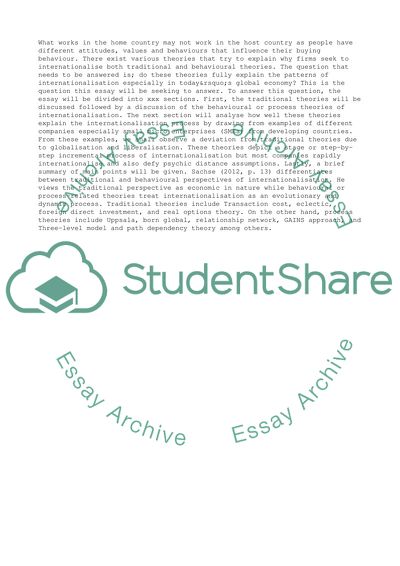Cite this document
(Limits of Internationalization Theories in an Unlimited World Essay, n.d.)
Limits of Internationalization Theories in an Unlimited World Essay. Retrieved from https://studentshare.org/business/1814880-what-key-factors-should-a-sheffield-firms-management-examine-when-seeking-to-an-emerging-market-in-terms-of-entry-modes-use-appropriate-frameworks-and-examples-to-support-your-argument
Limits of Internationalization Theories in an Unlimited World Essay. Retrieved from https://studentshare.org/business/1814880-what-key-factors-should-a-sheffield-firms-management-examine-when-seeking-to-an-emerging-market-in-terms-of-entry-modes-use-appropriate-frameworks-and-examples-to-support-your-argument
(Limits of Internationalization Theories in an Unlimited World Essay)
Limits of Internationalization Theories in an Unlimited World Essay. https://studentshare.org/business/1814880-what-key-factors-should-a-sheffield-firms-management-examine-when-seeking-to-an-emerging-market-in-terms-of-entry-modes-use-appropriate-frameworks-and-examples-to-support-your-argument.
Limits of Internationalization Theories in an Unlimited World Essay. https://studentshare.org/business/1814880-what-key-factors-should-a-sheffield-firms-management-examine-when-seeking-to-an-emerging-market-in-terms-of-entry-modes-use-appropriate-frameworks-and-examples-to-support-your-argument.
“Limits of Internationalization Theories in an Unlimited World Essay”, n.d. https://studentshare.org/business/1814880-what-key-factors-should-a-sheffield-firms-management-examine-when-seeking-to-an-emerging-market-in-terms-of-entry-modes-use-appropriate-frameworks-and-examples-to-support-your-argument.


